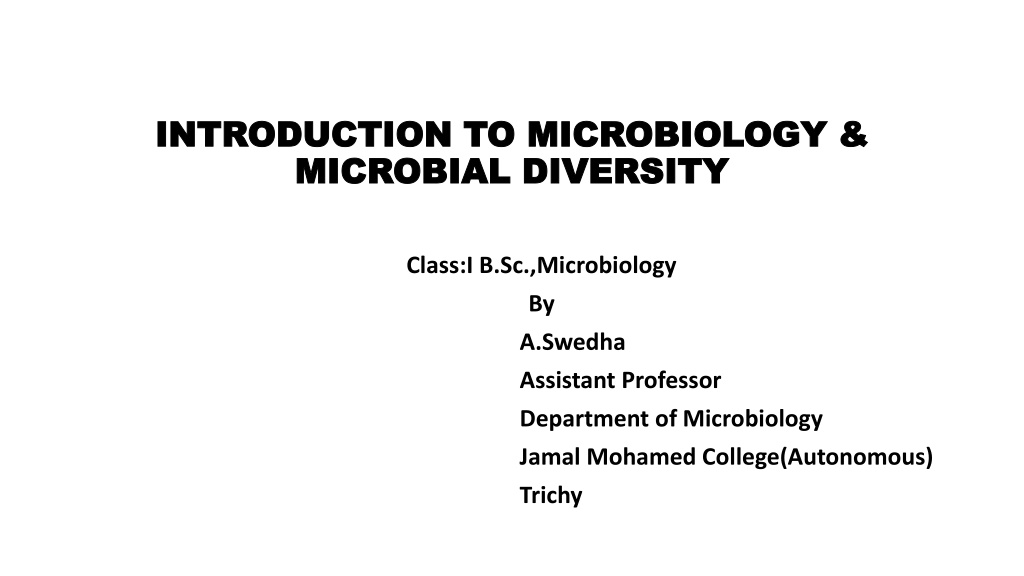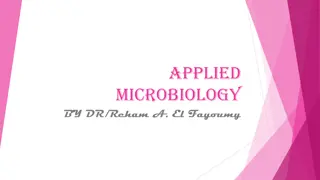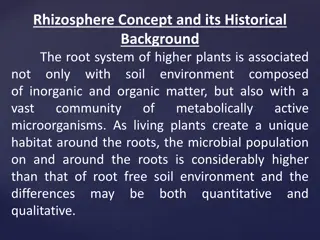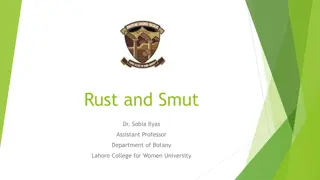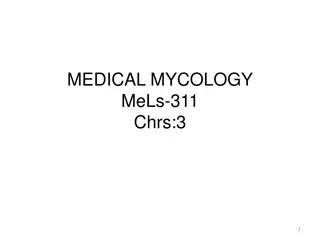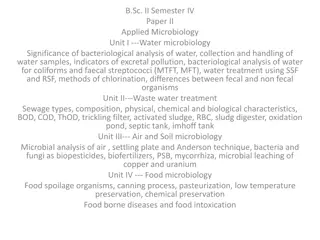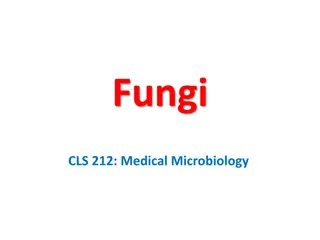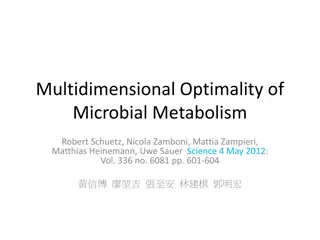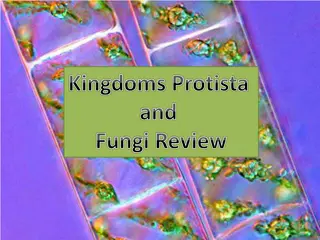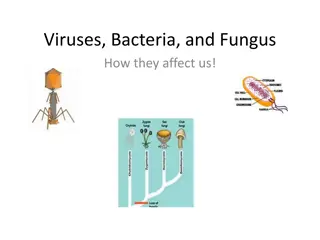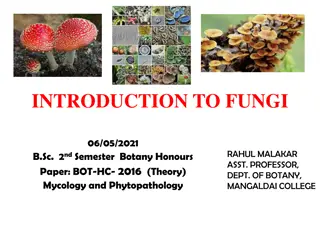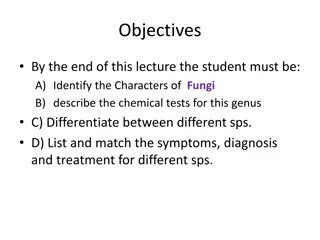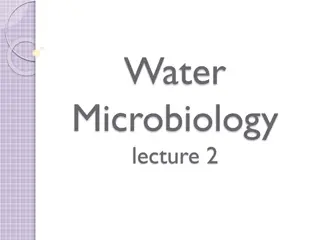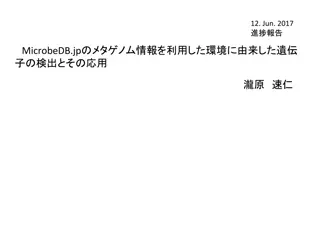Exploring Microbial Diversity: Fungi in Microbiology
Microbes are vital single-celled organisms that exist everywhere, some beneficial while others harmful. Fungi, a crucial group of microbes, can be unicellular or multicellular, with diverse roles in nature and human activities. This article delves into the characteristics and classification of fungi, showcasing their significance in the world of microbiology.
Download Presentation

Please find below an Image/Link to download the presentation.
The content on the website is provided AS IS for your information and personal use only. It may not be sold, licensed, or shared on other websites without obtaining consent from the author. Download presentation by click this link. If you encounter any issues during the download, it is possible that the publisher has removed the file from their server.
E N D
Presentation Transcript
INTRODUCTION TO MICROBIOLOGY & INTRODUCTION TO MICROBIOLOGY & MICROBIAL DIVERSITY MICROBIAL DIVERSITY Class:I B.Sc.,Microbiology By A.Swedha Assistant Professor Department of Microbiology Jamal Mohamed College(Autonomous) Trichy
INTRODUCTION TO MICROBIOLOGY & MICROBIAL DIVERSITY INTRODUCTION TO MICROBIOLOGY & MICROBIAL DIVERSITY Microbes are single Microbes are single- -celled organisms that are invisible to the naked eye celled organisms that are invisible to the naked eye Microbes are minute, unicellular organisms that are invisible to the naked eye. They are also known as microorganisms or microscopic organisms as they could only be seen under a microscope. They make up almost 60% of the earth s living matter. The term microbes is used to describe several different life forms with different size and characteristics. few of these microbes include: Bacteria Fungi Protists Viruses Archaea Microbes can be useful as well as harmful. Certain microbes cause severe infections and diseases and can also spoil food and other materials. While others play an important role in maintaining environmental balance.
FUNGI These can be unicellular or multicellular with the cell wall made of chitin. These are heterotrophic and cannot synthesise their own food. They comprise membrane-bound organelles. Yeasts, moulds, mushrooms are some of the important fungi. Few fungi are harmful and cause fungal infections like ringworm. The others are used in making antibiotics like penicillin. Fungi such as yeast are used in all baking industries and also in the beer and wine industries. Almost all the fungi have a filamentous structure except the yeast cells. They can be either single-celled or multicellular organism. Fungi consist of long thread-like structures known as hyphae. These hyphae together form a mesh- like structure called mycelium. Fungi possess a cell wall which is made up of chitin and polysaccharides. The cell wall comprises protoplast which is differentiated into other cell parts such as cell membrane, cytoplasm, cell organelles and nuclei. The nucleus is dense, clear, with chromatin threads. The nucleus is surrounded by a nuclear membrane.
Characteristics of Fungi Fungi are eukaryotic, non-vascular, non-motile and heterotrophic organisms. They may be unicellular or filamentous. They reproduce by means of spores. Fungi exhibit the phenomenon of alternation of generation. Fungi lack chlorophyll and hence cannot perform photosynthesis. Fungi store their food in the form of starch. Biosynthesis of chitin occurs in fungi. The nuclei of the fungi are very small. The fungi have no embryonic stage. They develop from the spores. The mode of reproduction is sexual or asexual. Some fungi are parasitic and can infect the host. Fungi produce a chemical called pheromone which leads to sexual reproduction in fungi. Examples include mushrooms, moulds, yeast.
Classification of Fungi Kingdom Fungi are classified based on different modes. The different classification of fungi is as follows: Based on Mode of nutrition On the basis of nutrition, kingdom fungi can be classified into 3 groups. Saprophytic The fungi obtain their nutrition by feeding on dead organic substances. Examples: Rhizopus, Penicillium and Aspergillus. Parasitic The fungi obtain their nutrition by living on other living organisms (plants or animals) and absorb nutrients from their host. Examples: Taphrina and Puccinia. Symbiotic These fungi live by having an interdependent relationship association with other species in which both are mutually benefited. Examples: Lichens and mycorrhiza. Lichens are the symbiotic association between algae and fungi. Here both algae and fungi are mutually benefited as fungi provide shelter for algae and in reverse algae synthesis carbohydrates for fungi.
Based on Spore Formation Kingdom Fungi are classified into the following based on the formation of spores: Zygomycetes These are formed by the fusion of two different cells. The sexual spores are known as zygospores while the asexual spores are known as sporangiospores. The hyphae are without the septa. Ascomycetes They are also called as sac fungi. They can be coprophilous, decomposers, parasitic or saprophytic. The sexual spores are called ascospores. Asexual reproduction occurs by conidiospores. Example Saccharomyces Basidiomycetes Mushrooms are the most commonly found basidiomycetes and mostly live as parasites. Sexual reproduction occurs by basidiospores. Asexual reproduction occurs by conidia, budding or fragmentation. Example- Agaricus Deuteromycetes They are otherwise called imperfect fungi as they do not follow the regular reproduction cycle as the other fungi. They do not reproduce sexually. Asexual reproduction occurs by conidia. Example Trichoderma.
Reproduction in fungi is both by sexual and asexual means. The sexual mode of reproduction is referred to as teleomorph and the asexual mode of reproduction is referred to as anamorph. Vegetative reproduction By budding, fission and fragmentation Asexual reproduction This takes place with the help of spores called conidia or zoospores or sporangiospores Sexual reproduction ascospores, basidiospores, and oospores The conventional mode of sexual reproduction is not always observed in the kingdom Fungi. In some fungi, the fusion of two haploid hyphae does not result in the formation of a diploid cell. In such cases, there appears an intermediate stage called the dikaryophase. This stage is followed by the formation of diploid cells.
Uses of Fungi Fungi are one of the most important groups of organisms on the planet as it plays a vital role in the biosphere and has great economic importance on account of their both benefits and harmful effects. Following are some of the important uses of fungi: Recycling They play a major role in recycling the dead and decayed matter. Food Mushrooms species are edible which are cultured and are used as food by humans. Medicines There are many fungi which are used to produce antibiotics, to control diseases in humans and animals. Penicillin antibiotic is derived from a common fungi Penicillium. Biocontrol Agents Fungi are involved in exploiting insects, other small worms and help in controlling pests. Spores of fungi are used as spray-on crops. Food spoilage Fungi play a major role in recycling organic material and are also responsible for major spoilage and economic losses of stored food.
Examples of Fungi Examples of Fungi Following are the common examples of fungi: Yeast Mushrooms Moulds Truffles
Economic Economic imporatance imporatance of fungi of fungi Fungi include hundreds of species which are of tremendous economic importance to man. They play an important role in medicine yielding antibiotics, in agriculture by maintaining the fertility of the soil and causing crop and fruit diseases, forming basis of many industries and as important means of food. Some of the fungi particularly molds and yeasts play a negative role by causing spoilage of stored goods such as foodstuffs, textiles, leather, rubber, plastic, timber and even glass. Role of Fungi in Medicine Role of Fungi in Industry Role of Fungi in Agriculture Role of Fungi as Food and as Food Producers.
Role of Fungi in Medicine: Role of Fungi in Medicine: Some fungi produce substances which help to cure diseases caused by the pathogenic microorganisms. These substances are called the antibiotics. The role of fungi m producing antibiotic substances was first established by Sir Alexander Fleming in 1929. He extracted the great antibiotic drug Penicillin from Penicillium notatum. It was the first antibiotic to be widely used. Streptomycin is obtained from Streptomyces griseus. It is of great value in medicine. It destroys many organisms which are not killed by penicillin particularly the gram-negative organisms. A numbers of antibiotics have also been extracted from Aspergillus cultures.
